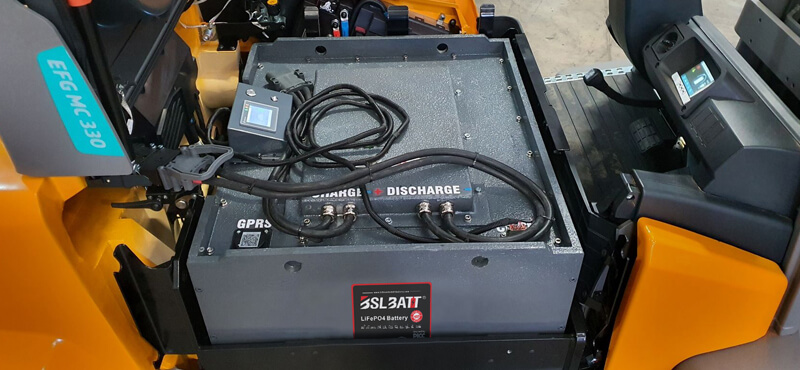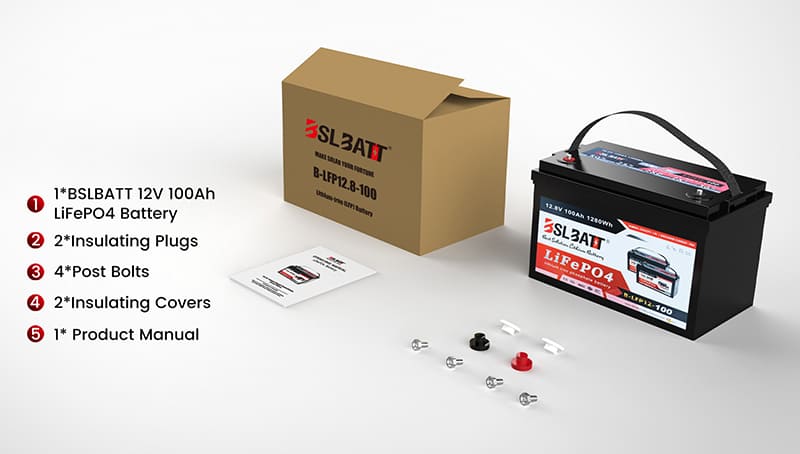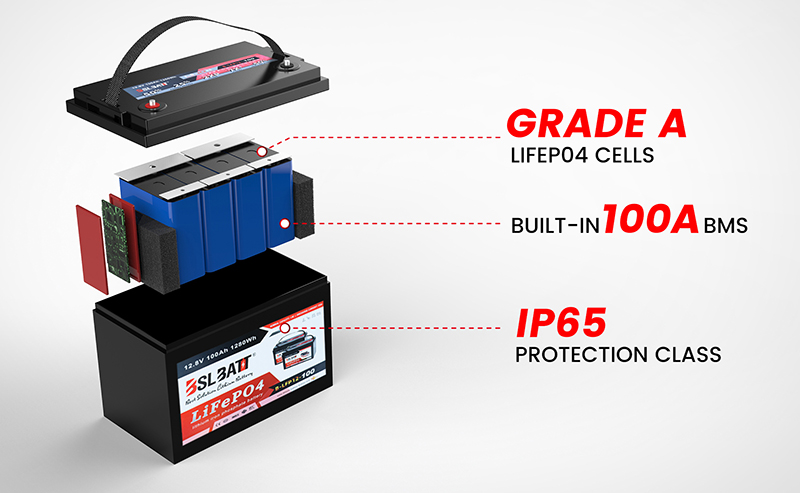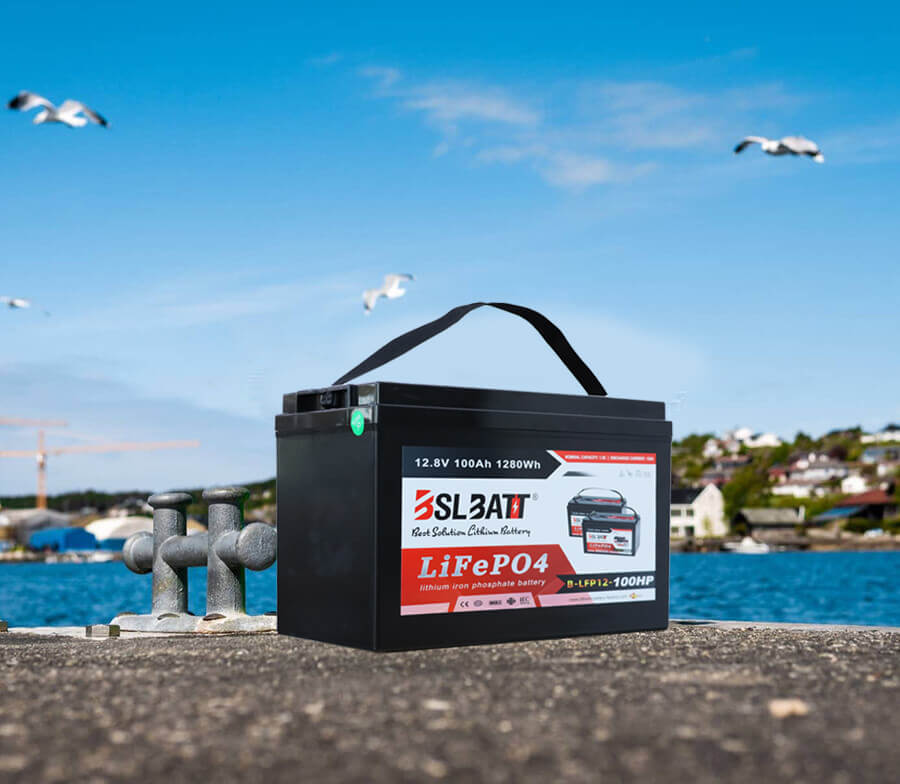Industry Application
Product Type
LiFePO4 Total Cost Of Ownership
Why Pay More for LiFePO4?Despite the higher upfront cost of lithium-ion batteries, the true cost of ownership is far less than lead-acid when considering life span and performance. Changing batteries less often means fewer replacement and labor costs. These savings make lithium batteries a more valuable long-term investment than lead-acid batteries. The Total Cost Of Ownership Of BSLBATT’s Lithium Iron Phosphate BatteriesCompared to lead-acid batteries, BSLBATT’s lithium iron phosphate (LiFePO4) batteries offer users practical advantages such as lighter weight and hands-off operation. These batteries also have longer lifetimes which makes for far less frequent battery replacements and service calls. But many first-time buyers of LiFePO4 batteries wonder if their higher purchase price compared to lead-acid batteries makes sense in terms of the total cost of ownership. Do LiFePO4 batteries cost more or less than lead-acid batteries over their operation lifetime? In this article, we present the results of a simple calculation that compares the total cost of ownership of a LiFePO4 battery compared to three competing lead-acid technologies.
Elements of Total Cost of Ownership To estimate the total cost of ownership of several battery technologies, we performed a simple cost calculation of BSLBATT’s B-LFP12V 100AH lithium iron phosphate battery and three equivalent sizes off-the-shelf lead-acid battery technologies: flooded lead-acid (FLA), Absorbent Glass Mat (AGM), and Gel. We took into account the most important factors such as: Initial cost of the battery. The up-front retail cost of the battery, the largest cost of initial installation.Labor cost of installation. A nominal cost of installing a battery, often performed by a skilled technician who in some cases must be scheduled and dispatched to the customer’s site. This cost is approximately the same for each battery type, however, the process must be repeated multiple times with lead-acid batteries over the life of a single LiFePO4 battery. Labor cost of maintenance. In the case of flooded lead-acid batteries, for example, this includes checking and topping off water levels and cleaning acid residue off the battery, and often the surrounding area, as well as cleaning and/or replacing nuts and bolts and cables that have become badly corroded. Lithium-ion batteries require no maintenance during their lifetime. Battery replacement costs. Includes a new replacement battery plus the cost of removal and installation by a qualified technician. Cost of charging. The nominal cost of electricity for charging the battery. It includes the need for overcharging lead-acid batteries to avoid stratification (the accumulation of lead sulfate on the battery’s plates). In our calculations, we assumed a DOD (depth-of-discharge) of 80% on all batteries before recharging was necessary. Along with the initial cost of the battery, perhaps the most critical factor in estimating the total cost of ownership is the specified lifetime of the battery in terms of the number of cycles until end of life. For our calculations, we took an end of life to be when each battery fails to deliver 50% of its initial capacity for lead-acid batteries and 70% for LiFePO4 batteries. The table below shows the retail price and expected number of cycles until end of life, taken from retail websites and the manufacturer’s published data sheets, of the four batteries used in this analysis.
Estimated Cycle Life
Total Cost of Ownership – ResultsThe total cost of ownership of each battery was calculated over a single lifecycle of the BSLBATT B-LFP12V 100AH battery since it has the longest life of all four batteries. Each of the three lead-acid batteries requires multiple replacements over the life of the B-LFP12V 100AH battery. For this calculation, we assumed an electricity cost for charging of $0.12/kWh, battery maintenance costs of $10/hour, and installation and replacement costs of $25/hour. Total Cost Over Life Comparison
The table above shows each factor in the overall total cost of ownership for each battery as well as the total cost of each battery per cycle. Based on the specified lifetime of each battery and their retail prices, it’s clear the total cost of the BSLBATT B-LFP12V 100AH battery is far less in terms of each cycle and in terms of the overall cost of ownership. While the lead-acid batteries have a far lower up-front cost, they require frequent replacement. The FLA batteries required 14 replacements, the AGM required 20 replacements, and the more cost-effective Gel batteries still required 7 replacements over the life of a single RB100. The total cost of ownership, including charging costs, of the B-LFP12V 100AH was $1,925. That’s 51% less than the Gel battery, the most economical of the three lead-acid batteries. The total average cost per charge of the B-LFP12V 100AH was just $0.27 over life
Other factors to considerIs the above enough to convince you of why Lithium might be a better alternative than AGM or indeed Gel? Personally I’m sold on Lithium, but if you are not here’s a few things further to consider:
ConclusionWhatever your decision when purchasing new batteries, maybe it is time to give the BSLBATT Lithium batteries a chance. There’s LiFe after Lead you know – but as I’ve shown that all depends on what you want to achieve. Is it less weight, less volume, maybe it’s capacity or voltage, or any of the multitude of factors that go into choosing a battery system. Lithium-ion batteries out-perform lead-acid batteries and cost less over time. BSLBATT LiFePO4 batteries deliver more power and longer life in a lightweight, maintenance-free package. BCI-standard sizes are available for many types of applications. Whatever you choose BSLBATT to have plenty of choices – with a large range of battery types and sizes: https://www.lithium-battery-factory.com/ |
















